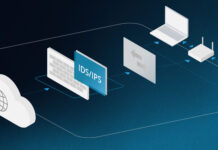With ChatGTP and other generative-AI tools making a splash in headlines today, artificial intelligence is a hot-button issue. Many industries are debating the merits of adopting AI tools to streamline workflows and optimize processes — and investor relation is no different.
One such debate unfolded online in a recent webinar hosted by the IR firm Q4. According to Q4’s panel of experts, AI could provide a supportive role to a busy investor relations officer despite its current risk and limitations.
This webinar echoes the chorus of other IR consulting experts who see an opportunity in adopting AI-based IR tools. Like many industries, investor relations is poised to transform in the coming years as these tools advance in scope and reputation — particularly in its predictive analytics.
What is Artificial Intelligence?

Artificial Intelligence (AI) combines tech’s impressive computational powers with human-like problem-solving skills. It relies on sophisticated machine learning algorithms that learn as it analyzes data, which allows it to adapt to new data in real-time without human intervention.
AI and machine learning gives tech the ability to reason like a human being, giving these tools the ability identify patterns and predict outcomes based off the data supplied.
The scope of your data systems provides a hard limit to these tools. In other words, AI can’t access data that isn’t supplied by its sample or training dataset. It will also replicate any inconsistencies or biases found in this information.
As a result, bias management — or humans testing and monitoring AI systems — is necessary to ensure accuracy and impartiality.
How is the Investor Relations Industry Using AI?

When applied to investor relations, AI-based IR tools can help you analyze data harvested from your extensive IR program — from human interactions to online phenomena. It learns from the data supplied by your CRM IR desktop app, capital markets virtual events, IR website, downloads, stock performance, peers, and other content.
Engagement analytics is one kind of AI-powered tool that aggregates and cleans these discrete elements to deliver an omniscient view of your IR program. It visualizes these metrics in an easy-to-use dashboard that helps you do a number of tasks:
- Access engagement metrics such as page views, downloads, and email opens.
- Track investors as they interact with your brand.
- Identify those investors that engage the most with your brand.
- Add flagged investor to your monitor list.
- Correlate your stock performance to key dates (like events, press releases, IR site updates, etc.).
- Tap into benchmarking data to compare your performance against market cap and sector peers.
- Review institutional investors to understand current ownership.
Surveillance is another IR tool that employs AI to help you process real-time market data to predict ownership and flag potential activist behavior in your shareholder base.
While engagement analytics provides a self-service, 360-degree view of your platform, surveillance is best paired with a team of analysts to assess who is driving your stock and why. These AI-backed analysts can flag signs of change in your base sooner so that you can respond to activism faster.
What Are the Biggest Advantages of AI-Powered IR Tech?

Here are five reasons why engagement analytics and surveillance can help you mount a more effective IR strategy.
1. Use More Data
The modern IR program collects an astounding volume of fragmented data that can be nearly impossible to process by hand. You can easily overlook important IR intelligence when working with vast datasets, and you may accidentally cause inaccuracies when transposing data from siloed tech.
AI removes these barriers to aggregate all your IR intelligence in one place, leaving no engagement metric behind.
2. Save Time
In the race between AI and IROs, this IR tool will always be faster. Engagement analytics software automates analysis at superhuman speeds in the time it takes an IRO to blink.
AI tools also don’t have to take breaks or recharge like the average IRO, so you can rely on these algorithms to work at these speeds indefinitely.
Putting AI tools on these time-intensive tasks frees you up for high-touch duties that require face-to-face communication, like one-on-ones and other meetings.
3. Understand Digital Engagements

Expanding your training data to include your entire IR program means your AI-based tools will have a wide-sweeping view your investors.
The best tools let you move effortlessly from the macro to the micro.
On the micro-level, you can drill into institutional investors to compare their engagements with ownership and sector. Alternatively, you can zero in on individual engagements to understand if content (like webpage content, press releases, and ESG initiatives) performs well and with which investors, flagging content that investors prioritize in their research.
On the macro-level, you can pull back to compare these engagement metrics against your program’s performance, sector peers, and the overall market.
4. Refine Targeting and Outreach
The more data, the better the predictions. AI-based tools can track patterns in engagement metrics against trends in your stock. You’ll be able to reveal institutions that are following story that are primed for outreach. You can prioritize these engagements as soon as investors express their interest in your brand.
AI-based engagement analytics can also reveal institutions that are following your sector who may not be shareholders yet. You can leverage benchmarking and ownership intelligence to reveal and target institutions who actively follow your sector.
5. Monitor Red Flags
Not all activity within your digital program will be positive. Activist investors may be engaging with your brand before they launch a campaign. AI-based surveillance and engagement analytics can flag this behavior within your online content before it happens in your stock. This early warning system can help you mount a better defence against activist campaigns.
ESG activism has been growing over the past few years. In 2022, activist launched 235 campaigns against public companies that didn’t align with their principles. An early look at 2023 trends shows 69 campaigns have been launched in Q1 alone.
Bottom Line

Looking ahead to the future of investor relations, AI will continue to support many of the tasks in your typical day as an IRO. And as its powers and sophistication develop, so will its role in your IR program.
Until then, AI-based engagement analytics and surveillance can crunch the numbers faster and more reliably than any human on your team. With greater oversight of your IR intelligence, you can harness these tools to make understand engagements, target with precision, and prepare for activism.



















